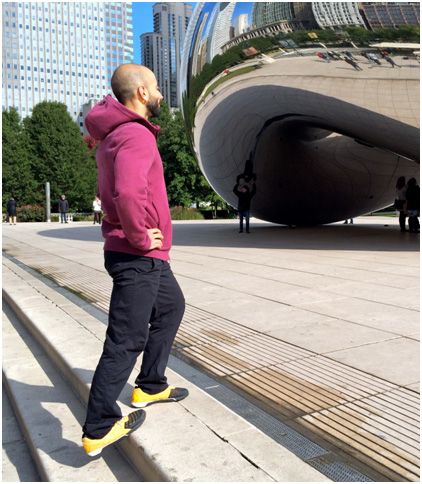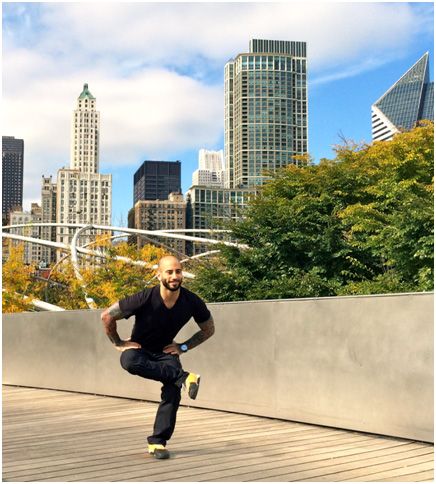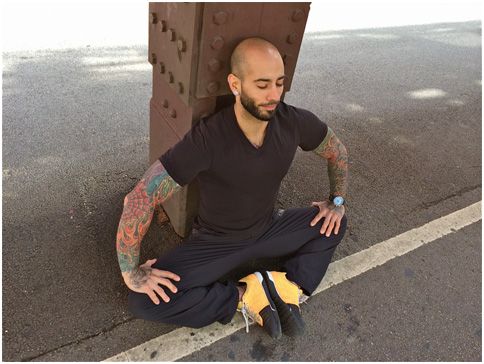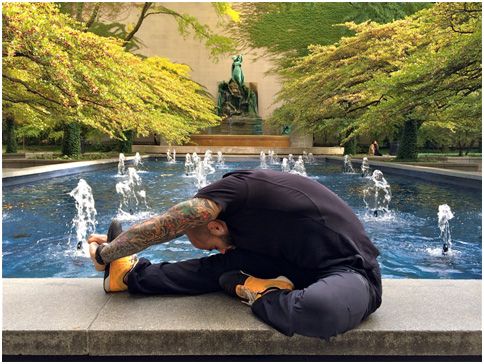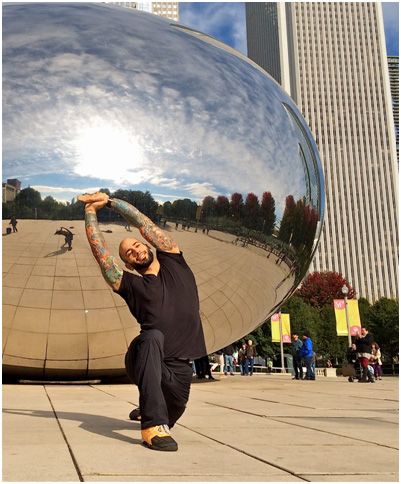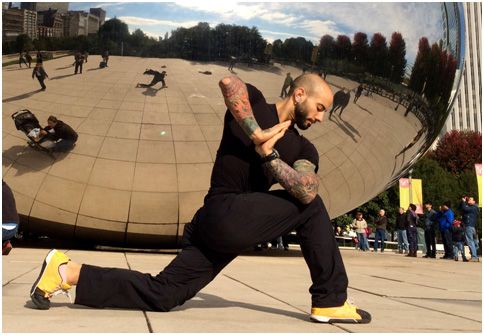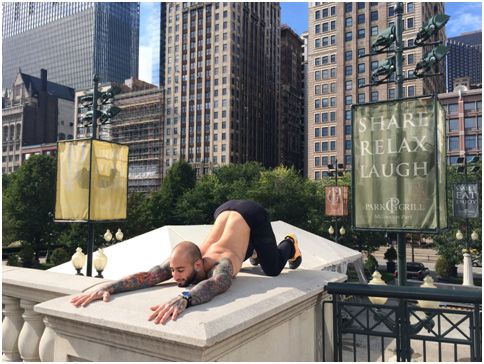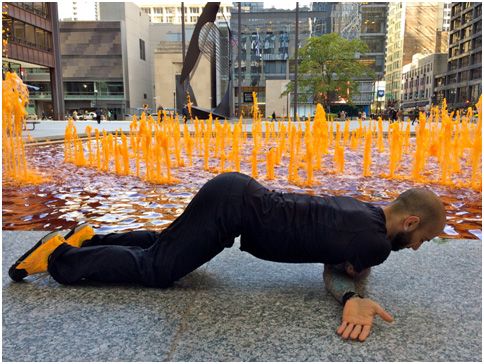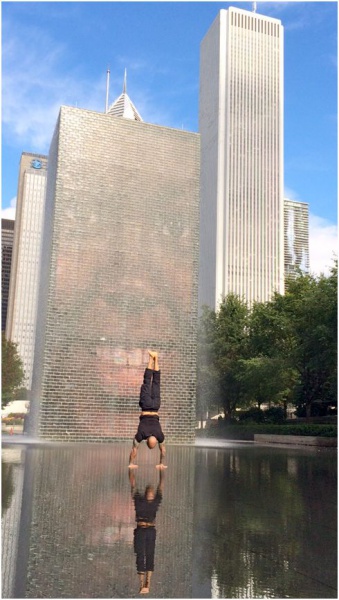 Hey there! How is your training going? Are you making lots of progress on your pistol, handstand push-up and bridge progressions? That’s awesome! How is your body feeling? It’s about time we address the purple and pink striped elephant in the room. Do you take the time to work on skill/technique development and regressions rather than just focusing on cultivating specific strength? How often do you take a day off? Do you include some active recovery or are you inclined to just take it easy and catch up on some youtube or boobtube? Yep, lots of questions coming your way, I know. I’m not trying to poke or point fingers at what you may be or may not be doing. Lets talk recovery and building a happy body that wants nothing more than to rebuild and be better than ever!
Hey there! How is your training going? Are you making lots of progress on your pistol, handstand push-up and bridge progressions? That’s awesome! How is your body feeling? It’s about time we address the purple and pink striped elephant in the room. Do you take the time to work on skill/technique development and regressions rather than just focusing on cultivating specific strength? How often do you take a day off? Do you include some active recovery or are you inclined to just take it easy and catch up on some youtube or boobtube? Yep, lots of questions coming your way, I know. I’m not trying to poke or point fingers at what you may be or may not be doing. Lets talk recovery and building a happy body that wants nothing more than to rebuild and be better than ever!
I personally LOVE the PCC minimalist approach, especially when it comes to recovery days. But what exactly is a recovery day? Following a simplistic approach to fitness, to me a rest and recovery day incorporates more of what you typically do less of.
Try making a point to emphasize eating and sleeping. Food provides the nutrients and building blocks that support the demands we place on our bodies. When we sleep, are body’s little worker bees put on their hard hats and rebuild our foundation to be bigger and better, allowing our muscles to grow stronger and longer. Catching up with friends and family reminds us of what is important in our lives providing a necessary distraction from the mental grind of vigorous exercise. Light cardiovascular activity is a must. Yes, I said it. I know that High Intensity Interval Training is all the craze right now with plenty of scientific research to back it up but please don’t forget that we need to be easy on our bodies from time to time. 20+ minutes of easy-moderate steady state exercise is a very heart healthy activity to include. Lastly restoring range of motion to our body’s joints and increasing our flexibility will keep our physical body in balance.
If you are wondering where to fit this in, take a step back to look at your weekly training block. How many days in a row are you pushing your body? The acclimated body can go hard for up to three days in a row before it will be asking for a de-loading day. If you are a little more advanced in your age, or have less than 3-5 years of consistent vigorous exercise under your belt, your body may require a break every third day. At a minimum one should back off at least one day a week with a preference of two (maybe three) days depending on your training history. Again, this does not require a total day of nothing on the agenda, just enough of a change of pace to allow the battery to recharge.
Structuring a Recovery Day:
It can be next to impossible to recommend a routine for everyone who reads this article, but I can at least provide some guidelines to help structure a recovery day based on the demands these workouts place on the body.
Recovery can actually to be very intuitive. Many of us are goal oriented and have been working on obtaining certain skills like a back lever or freestanding handstand push-up. Along the journey to these benchmarks we stumble across tight backs, sore shoulders and wrists or maybe even creaky knees. These are all signs from our body telling us that it may require a little extra love and dedicated time where you give back to your self.
Looking specifically at the movements found in the PCC curriculum, we ask a lot out of our shoulders, chest, triceps, forearms and core musculature as we work to support our entire body weight practicing all the push-up, handstand and arm lever variations. Though the single leg squat progressions do not place a significant demand on the lower body compared to a 2x body weight barbell squat, we may find that limits in our mobility hinder our ability to achieve full range of motion in the pistol squat, or at least challenge our confidence in the movement’s execution. If the bottom position of the pistol is easy to obtain, compare it to the shrimp squat, or even the double shrimp? Most likely we will find some difficulty along that journey.
I always structure a recovery workout for my athletes to begin with 20-30 minutes of a steady cardiovascular activity. A few suggestions may be an easy 5k run on a mostly flat to rolling course, a bike ride on the smallest chain ring of your crankset, a steady swim or up to a 5k row focusing on mechanics, cadence and breathe work. The steady cardio is programmed first in our recovery for a few reasons. Most importantly it will generate body heat and prep your soft tissue for manipulation and stretching. Steady cardio creates a calming / meditative effect on the body and mind. It also promotes an environment of self-exploration where you may develop the intuition of what areas of your body may need a little extra attention when it is time to stretch.
After the heat-building phase of the cardio warm-up is complete, it’s time to address some binding in the soft tissue with self-myofascial release techniques (self-massage). For this you can purchase all sorts of tools to address every area of the body such as foam rollers, PVC piping, rumble rollers, tennis balls, a tiger tail and so on. I suggest picking up a lacrosse ball, as it is the most universal tool, you can easily take it anywhere and it can generally apply enough pressure on your trigger points to promote change.
Using the lacrosse ball or roller is theoretically very simple. Pick a muscle group to work on and lay your bodyweight over the tool. Initially you will scan around your soft tissue on the tool looking for any tender spots or pain spots. Once something jumps out at you, stop moving and isolate the discomfort. Try your hardest to not move off the spot, then apply a contract and relax activation with the muscle group you are rolling over. You can do this by either squeezing the muscles you are resting on or moving the stimulated joint through its natural range of motion over and over. This will most definitely cause a bit more discomfort but let me be upfront and completely honest with you. When it comes to restoring / improving mobility or flexibility, its going to be uncomfortable. The more discomfort you can tolerate (aside from sharp pain, which is always bad) the more change you will make. If its not uncomfortable, then you wont be making much if any progress. Your only other option to break up the binding is to get a deep tissue sports massage on a weekly or biweekly schedule. If your budget isn’t big enough to afford regular body work, then get comfortable with being uncomfortable on a lax ball 😛
Personally, I beat my body up enough that I can spend all day doing soft tissue work, so in order to keep ourselves within a reasonable time cap, pick an area on the front side and back side of the shoulders as well as an area both on the front side and back side of the hips. Spend about 5 minutes on each or at least until you feel a bit of the discomfort begin to subside.
Now that we have successfully built requisite body heat and prepped our soft tissues to make change, its time to focus on increasing our flexibility since many exercises in the PCC curriculum require a fair level of specific flexibility. To do this we will work from the ground up.
-Single leg squats require a significant amount of ankle mobility so here we can utilize a standard Standing Calf Stretch focusing on dorsi-flexing our ankle as much as possible. Don’t forget to practice this stretch with the knee straight as well as bent.
-To get the outer hips, a Standing Figure 4 Stretch is achieved by crossing one ankle over the opposing knee. From this position, sit back as if you were sitting in a chair while simultaneously reaching your rib cage over the top shin. Do your best to keep your hips as neutral as possible rather than shifting them to help counter balance the posture.
-Inner thighs are most accessibly stretched in the Bound Angle Pose. Here push your lower back up against a wall and pull your heels together as close to your inner thighs as possible. For the remainder of the stretch, place your hands on your knees with fingers pointed toward your midline and gradually apply pressure down into your legs as if you could press your knees all the way to the floor.
-Stretch the backside of your legs with the traditional Head-to-Knee Pose. From a seated position, extend one leg forward and align the sole of your opposite foot against the inner thigh of your extended leg. From here, square the center of your chest with the knee of your extended leg and lean forward in an attempt to rest your bottom rib on your upper thigh bringing your nose-to-knee.
-Half Kneeling Hip Flexor Stretch with a side bend will open the front of the hips as well as prep the spine to bend and twist. Set up in a lunge position with the back knee on the floor. Bind your fingers and stretch both arms over head. From here slide your hips forward until you feel a significant stretch in the hip flexor muscle of the down knee then begin to side bend over the front leg focusing on a long stretch sensation from the top of the hip all the way to the bottom of your armpit.
-You are only as young as the mobility of your spine so to improve this, hang tight in the half kneeling position while you twist your opposite elbow over the front knee. Place your hands in a prayer position with fingertips facing forward then press your hands together to engage and deepen the twist.
-Heart Opener’s Pose is a great stretch for the mid to lower back, it improves your overhead position and acts as a great prep for bridging. Find your way into this posture by setting up in a quadruped position (kneeling on all fours). Prioritize the stretch in your middle back first by pressing your belly button down towards the floor, arching your spine. Finally, to stretch your shoulders and deepen the back bend, keep your hips stacked on top of your knees while you walk your hands forward until you can rest your forehead or even your chin on the ground.
-Address your shoulders with a Butterfly Shoulder Stretch. Again starting in a quadruped position, cross your elbows in front of your shoulders with the tops of your hands pressed against the ground. Stretch your arms away from each other, shrug your shoulders down away from your ears then slowly begin to rock forward until your chest aligns in front of your elbows and you feel a stretch on the outside of the shoulder that is stacked in front.
Following this blueprint may not cure all or any of your ailments, but it will certainly aid in your weekly workout recovery. It is easy to get consumed by the exercises that build strength and conditioning while losing sight of benefits gained by slightly backing off the intensity. Try adding this to your program at least once a week and let me know how it affects your progress.
***
About Angelo Gala, RKC / PCC Team Leader: Angelo Gala has been a fitness professional in the Boston area for greater than 11 years. He is a Certified Strength and Conditioning Specialist through the NCSA, and has studied the Pranavayu system of yoga under David Magone. He is a Dharma friend at the Sakya Center of Buddhist Studies in Cambridge, MA where he completed a 1 year intensive study of Mangalam Yantra Yoga under the guidance of Lama Migmar Tseten. Go to http://www.dragondoor.com/angelo-gala/ for more info.
